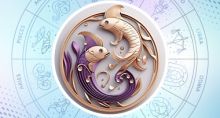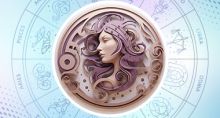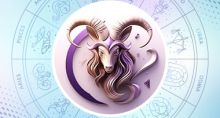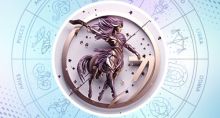History of Navarathri
What is Navarathri?
Navarathri is one of the very important festivals of our country. Nava or Navam means number 9 and Rathri is night. The word Navarathri thus means Nine Nights that are considered very auspicious. The festival ends on the tenth day, known as Vijayadasami or Dussera, which symbolizes the victory of good over evil. Though there are Navarathris in all the seasons, it is the Autumn Navarathri which is very widely celebrated as the Navarathri festival. It falls in the bright fortnight of the month of Ashwin or Purattasi, that corresponds to September-October. Predominantly, it is mother Goddess Durga and her different forms, who are worshipped during the occasion.  What are the histories and legends associated with Navarathri? Though Navarathri is celebrated throughout the country, different legends are associated with it in different regions. The most prominent of these legends sings the glory of Goddess Durga and her exploits. Mahishasura, the buffalo- headed demon did intense penance towards Lord Shiva and obtained the boon that he cannot be vanquished by anyone other than a woman, whom he considered weak. Armed with this armour of near invincibility, he began harassing all the worlds and their inhabitants. And the people started crying out to the Gods, seeking relief from his atrocities. The Godly trinity of Brahma, Vishnu and Shiva were moved and decided to come to their rescue. Unifying all their divine powers, they created a wonderful feminine divinity, known as Goddess Durga. While this divine warrior set out straightaway to take on the might of the mighty demon, Mahishasura, on the other hand was smitten by her remarkable beauty and sought her hand in marriage. For that, the Goddess said, the Asura has to fight her and win. The demon agreed readily, as he was sure, no woman can even think of conquering him. The fierce battle between the powerful Goddess and the mighty demon lasted for nine nights, which are observed as Navarathri. Devi Durga, ultimately destroyed Mahishasura on the tenth day and this day is celebrated as Vijayadasami, the victorious tenth day. In addition, another legend remains popular in East. Once, the Goddess was born as Uma, the daughter of the powerful Daksha. As she worshipped Lord Shiva and married him against the wishes of her father, he got very upset. Later, when Daksha performed a great sacrifice, he ignored his daughter and son-in-law by not calling them for the auspicious event. Stung by this humiliation, Uma went uninvited to the event, took on her father and ultimately, ended her own life there itself, by jumping into the sacrificial fire. Thus, she came to be called as Sati. This led to a catastrophe, as the enraged Shiva destroyed the sacrifice. Uma, who was born again, did a great penance towards Shiva and attained him once again, as her husband. With all the bitter feelings of the past cleared, Uma began visiting her parents again with affection every year during this time of the year. This annual visit of the Goddess to her parent’s home, along with her children Ganesh and Karthik, Goddesses Lakshmi and Saraswathi, and her close friends, Jaya and Bijaya, is celebrated as Navarathri. Another popular legend widely regarded in North, associates Navarathri with Ramayana. It is believed that Rama prayed to the nine aspects of Goddess Durga for nine continuous nights and obtained the power to overpower Ravana, in the war that he waged against him to win back his wife Sita from his captivity. These nine nights came to be regarded as Navarathri. Rama destroyed Ravana on the tenth day, signaling the ultimate triumph of virtue over the vice, and this day of victory is celebrated as Vijayadasami or Dussera.
What are the histories and legends associated with Navarathri? Though Navarathri is celebrated throughout the country, different legends are associated with it in different regions. The most prominent of these legends sings the glory of Goddess Durga and her exploits. Mahishasura, the buffalo- headed demon did intense penance towards Lord Shiva and obtained the boon that he cannot be vanquished by anyone other than a woman, whom he considered weak. Armed with this armour of near invincibility, he began harassing all the worlds and their inhabitants. And the people started crying out to the Gods, seeking relief from his atrocities. The Godly trinity of Brahma, Vishnu and Shiva were moved and decided to come to their rescue. Unifying all their divine powers, they created a wonderful feminine divinity, known as Goddess Durga. While this divine warrior set out straightaway to take on the might of the mighty demon, Mahishasura, on the other hand was smitten by her remarkable beauty and sought her hand in marriage. For that, the Goddess said, the Asura has to fight her and win. The demon agreed readily, as he was sure, no woman can even think of conquering him. The fierce battle between the powerful Goddess and the mighty demon lasted for nine nights, which are observed as Navarathri. Devi Durga, ultimately destroyed Mahishasura on the tenth day and this day is celebrated as Vijayadasami, the victorious tenth day. In addition, another legend remains popular in East. Once, the Goddess was born as Uma, the daughter of the powerful Daksha. As she worshipped Lord Shiva and married him against the wishes of her father, he got very upset. Later, when Daksha performed a great sacrifice, he ignored his daughter and son-in-law by not calling them for the auspicious event. Stung by this humiliation, Uma went uninvited to the event, took on her father and ultimately, ended her own life there itself, by jumping into the sacrificial fire. Thus, she came to be called as Sati. This led to a catastrophe, as the enraged Shiva destroyed the sacrifice. Uma, who was born again, did a great penance towards Shiva and attained him once again, as her husband. With all the bitter feelings of the past cleared, Uma began visiting her parents again with affection every year during this time of the year. This annual visit of the Goddess to her parent’s home, along with her children Ganesh and Karthik, Goddesses Lakshmi and Saraswathi, and her close friends, Jaya and Bijaya, is celebrated as Navarathri. Another popular legend widely regarded in North, associates Navarathri with Ramayana. It is believed that Rama prayed to the nine aspects of Goddess Durga for nine continuous nights and obtained the power to overpower Ravana, in the war that he waged against him to win back his wife Sita from his captivity. These nine nights came to be regarded as Navarathri. Rama destroyed Ravana on the tenth day, signaling the ultimate triumph of virtue over the vice, and this day of victory is celebrated as Vijayadasami or Dussera.




















